 [Image: From "Labyrinths, Mazes and the Spaces Inbetween" by Sam McElhinney].
[Image: From "Labyrinths, Mazes and the Spaces Inbetween" by Sam McElhinney].
Sam McElhinney, a student at the Bartlett School of Architecture, has been building full-scale labyrinths in London and testing people's spatial reactions to them. See photos of his constructions, below.
McElhinney explained his research to BLDGBLOG in a recent email, attaching a paper that he delivered earlier this month at a cybernetics conference in Vienna, where it was awarded best paper. Called "Labyrinths, Mazes and the Spaces Inbetween," it describes McElhinney's fascinating look at how people actually walk through, use, and familiarize themselves with the internal spaces of buildings, using mazes and labyrinths as his control studies.
In the process, McElhinney introduces us to movement-diagrams, Space Syntax, and other forms of architectural motion-analysis, asking: would a detailed study of user-behaviors help architects design more consistently interesting buildings, spaces that "might evoke," he writes, "a sense of continual delight"? Pushing these questions a bit further, we might ask: should all our buildings be labyrinths?
 [Images: Movement-typologies from "Labyrinths, Mazes and the Spaces Inbetween" by Sam McElhinney].
[Images: Movement-typologies from "Labyrinths, Mazes and the Spaces Inbetween" by Sam McElhinney].
Early in the paper, McElhinney differentiates between the two types of interior experiences—between mazes and labyrinths.
- A path system can be multicursal: a network of interconnecting routes, intended to disorient even the cunning. It may contain multiple branches and dead ends, specifically designed to confuse the occupant. This is a maze.
Alternatively, a path can form a single, monocursal route. Once embarked upon, this may fold, twist and turn, but will remain a constant and ultimately reach a destination; this is a labyrinth.
The experience of walking these two topologies is very different.
How can architects design for this switch?
 [Images: From "Labyrinths, Mazes and the Spaces Inbetween" by Sam McElhinney].
[Images: From "Labyrinths, Mazes and the Spaces Inbetween" by Sam McElhinney].McElhinney's argument segues through a discussion of Alasdair Turner’s Space Syntax investigations (and the limitations thereof). He describes how Turner put together a series of automated test-runs through which he could track the in-labyrinth behavior of various "maze-agents"; these reprogrammable "agents" would continually seek new pathways through the twisty little passages around them—a spatial syntax of forward movement—and Turner took note of the results.
Turner's test-environments included, McElhinney explains, a maze that "was set to actively re-configure upon a door being opened, altering the maze control algorithms" behind the scenes, thus producing new route-seeking behavior in the maze-agents.
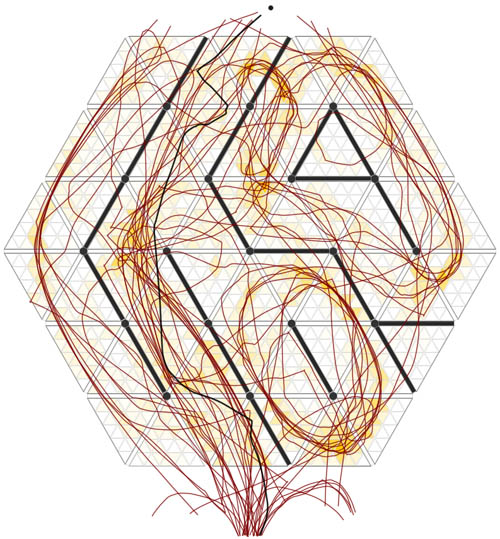

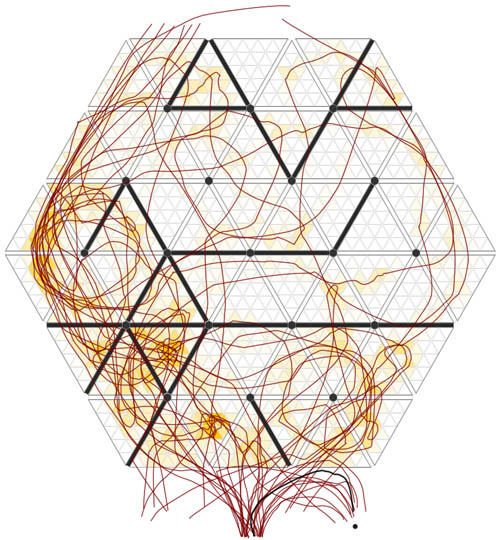 [Images: From "Labyrinths, Mazes and the Spaces Inbetween" by Sam McElhinney].
[Images: From "Labyrinths, Mazes and the Spaces Inbetween" by Sam McElhinney].Unsatisfied with Turner's research, however, McElhinney went on to build his own full-scale "switching labyrinth" near London's Euston Station. Participants in this experiment "animated" McElhinney's switching labyrinth by way of "a stepper motor and slide mechanism" that, together, were "able to periodically shift, 'switching' openings to offer alternative entrance and exit paths."
The participants walked in and their routes warped the labyrinth around them.
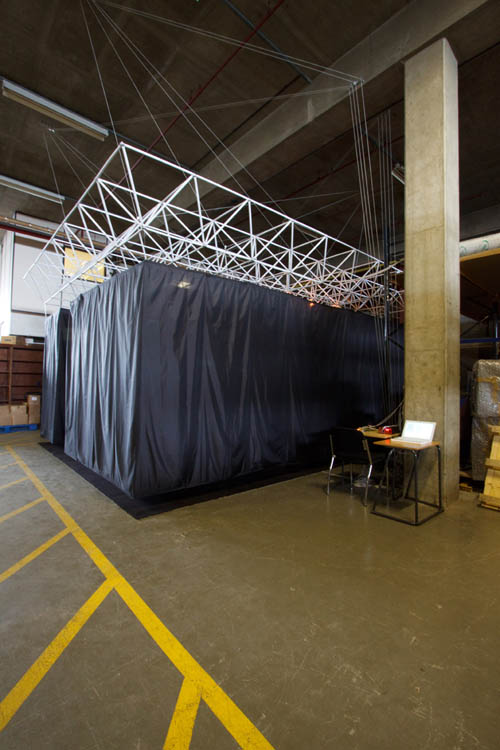 [Image: Sam McElhinney's "switching labyrinth," or psycho-cybernetic human navigational testing ground, constructed near Euston Station].
[Image: Sam McElhinney's "switching labyrinth," or psycho-cybernetic human navigational testing ground, constructed near Euston Station].After watching all this unfold, McElhinney suggested that further research along these lines could help to reveal architectural moments at which there is an "emergence of labyrinthine, or familiar, spatialities within an unknown or changing maze framework."
There can be a place or moment within any building, in other words, at which the spatially unfamiliar will erupt—and from movement-pathway studies we can extrapolate architectural form, buildings that perfectly rest at the cognitive flipping point between maze and labyrinth, familiar and disorienting, adventurous and strange.


 [Images: Sam McElhinney's "switching labyrinth"].
[Images: Sam McElhinney's "switching labyrinth"].The cybernetics of human memory and in-situ spatial decision-making processes provide a framework from which we can extract and assemble a new kind of architecture.
 [Image: From "Labyrinths, Mazes and the Spaces Inbetween" by Sam McElhinney].
[Image: From "Labyrinths, Mazes and the Spaces Inbetween" by Sam McElhinney].How we move through coiled, labyrinthine environments can be studied for insights into human navigation, physiology, and more.
 [Image: From "Labyrinths, Mazes and the Spaces Inbetween" by Sam McElhinney].
[Image: From "Labyrinths, Mazes and the Spaces Inbetween" by Sam McElhinney].Briefly, I'm reminded here of 765's look earlier this winter at the history of all-text adventures, including Zork and the Colossal Cave Adventure. "The game is a landscape," 765 writes, and the parallels with McElhinney's mazes should be obvious, "but this isn't a landscape that can be appreciated visually, it can only be apprehended and understood structurally and functionally. The similarity of the game's structure to the flowcharts used by computer scientists is obvious, it is a network of nodes with paths between them that control how the landscape can be moved through."
Indeed, 765 adds, "the structure itself has a form, a branching self-similar network that is as intricate as any graphic representation."
In any case, McElhinney sent over a huge range of maze and labyrinth precedents that served as part of his research; some images from that research appear below.
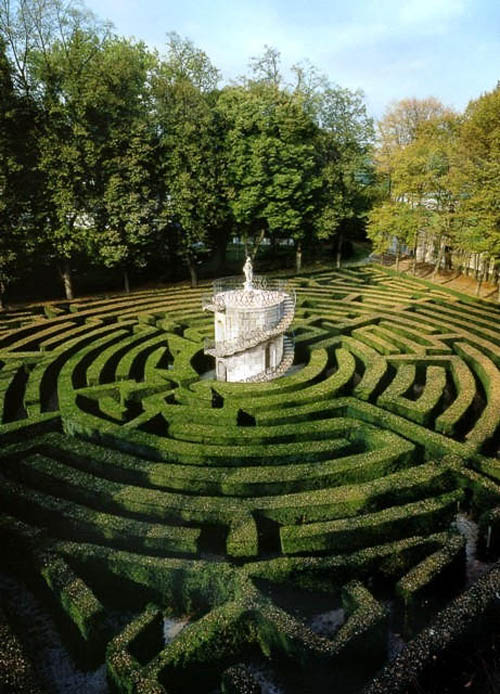

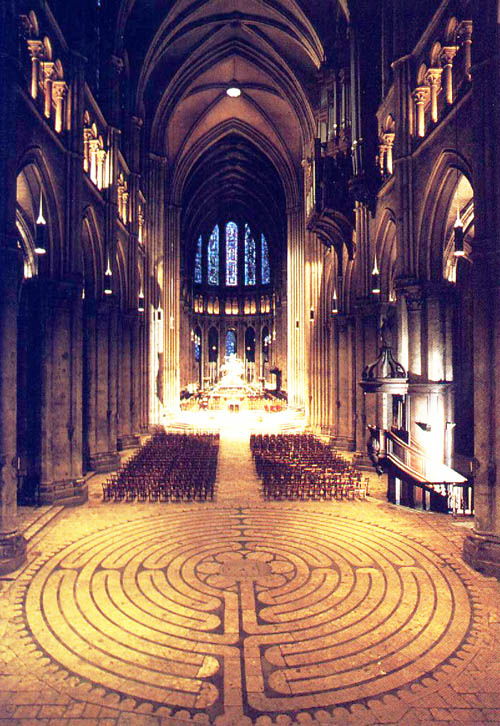

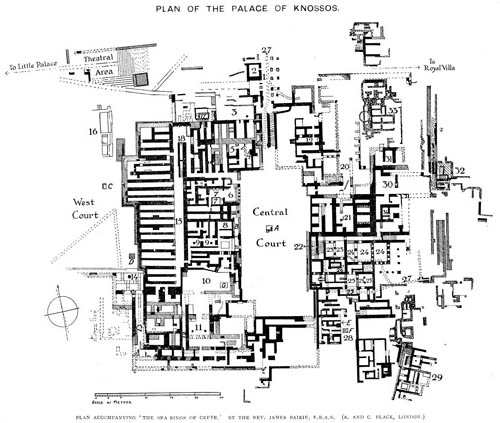 [Images: Maze-studies from "Labyrinths, Mazes and the Spaces Inbetween" by Sam McElhinney].
[Images: Maze-studies from "Labyrinths, Mazes and the Spaces Inbetween" by Sam McElhinney].It's fascinating research, and I would love to see it scaled way, way up, beyond a mere test-maze in a warehouse into something both multileveled and city-sized.